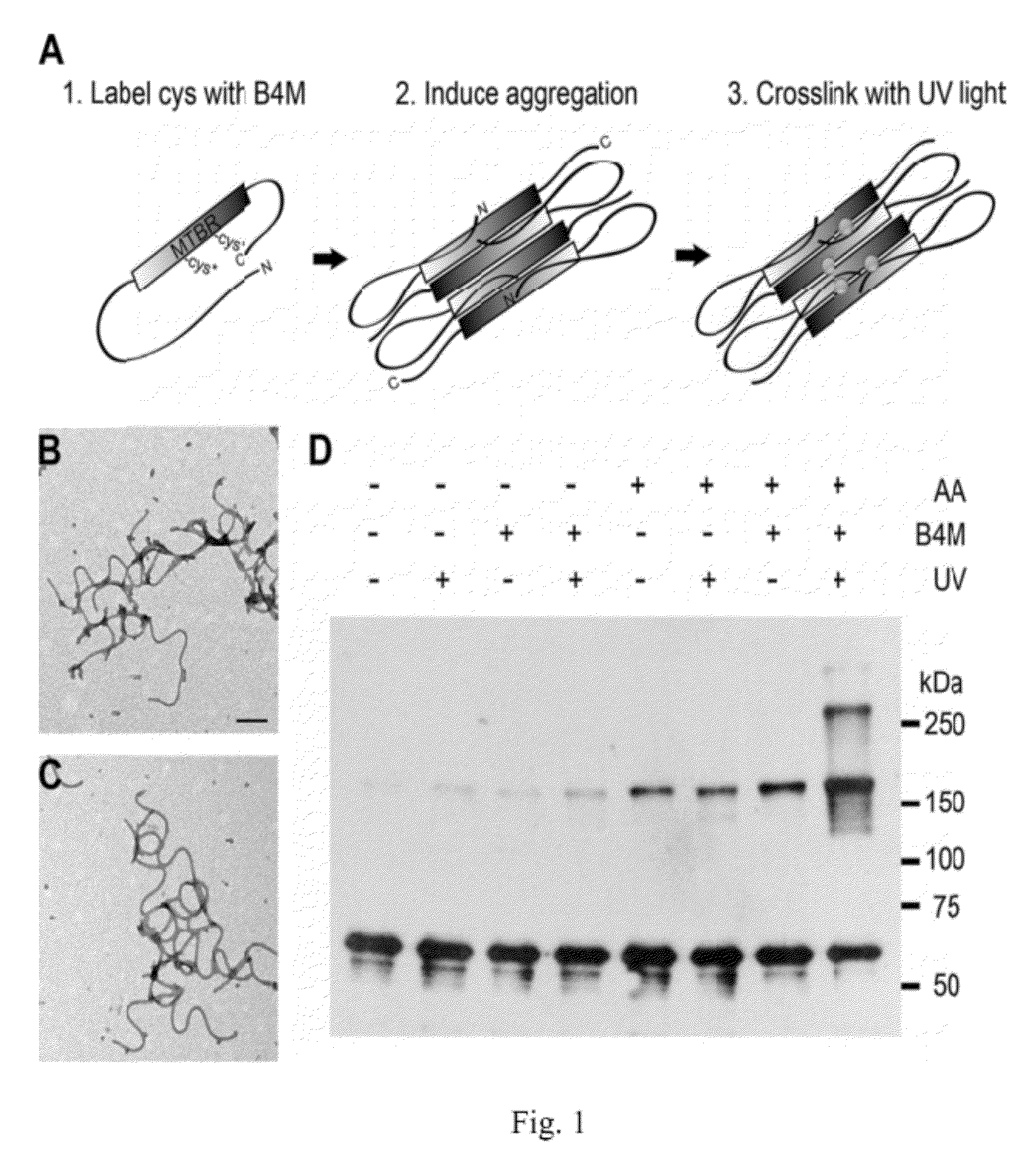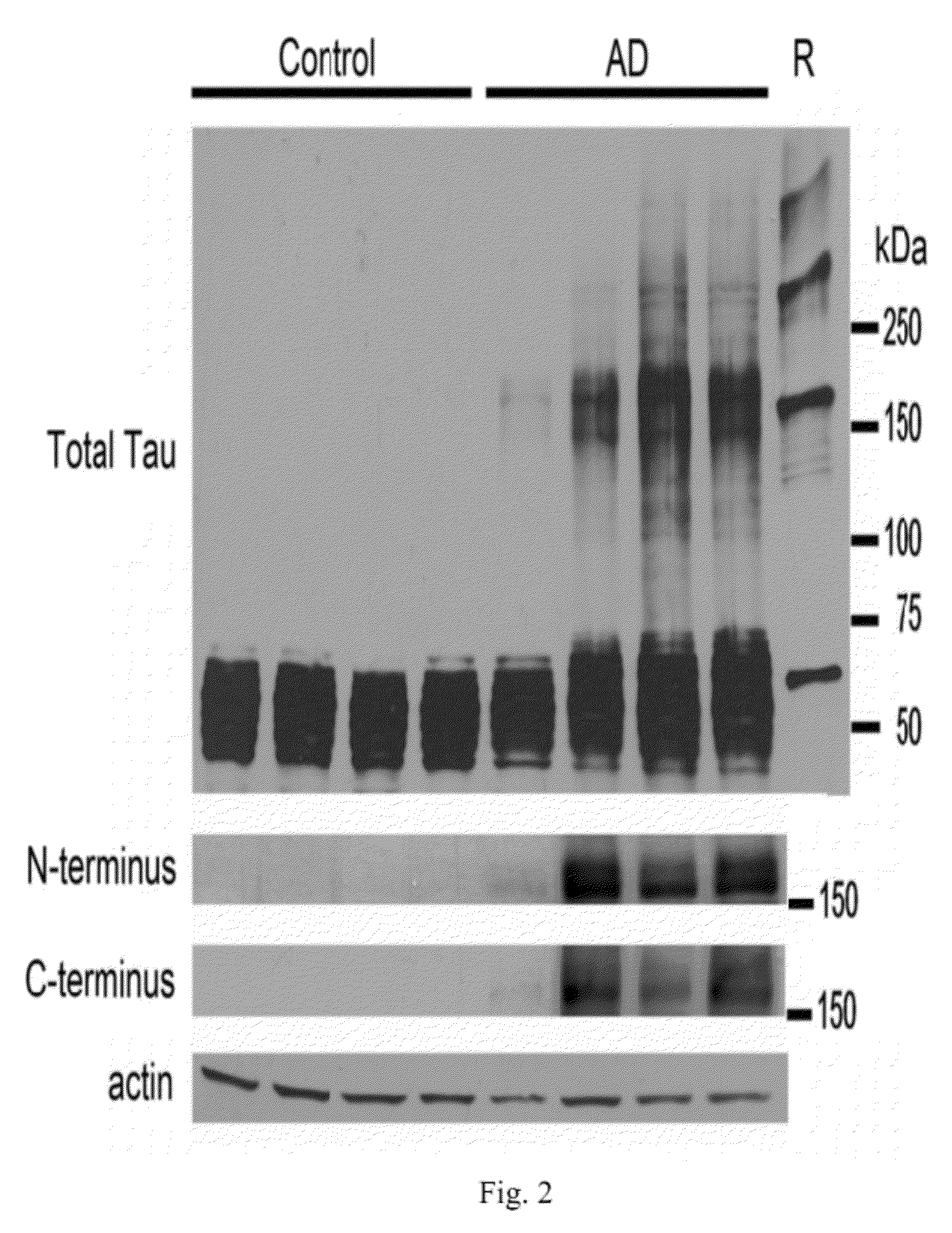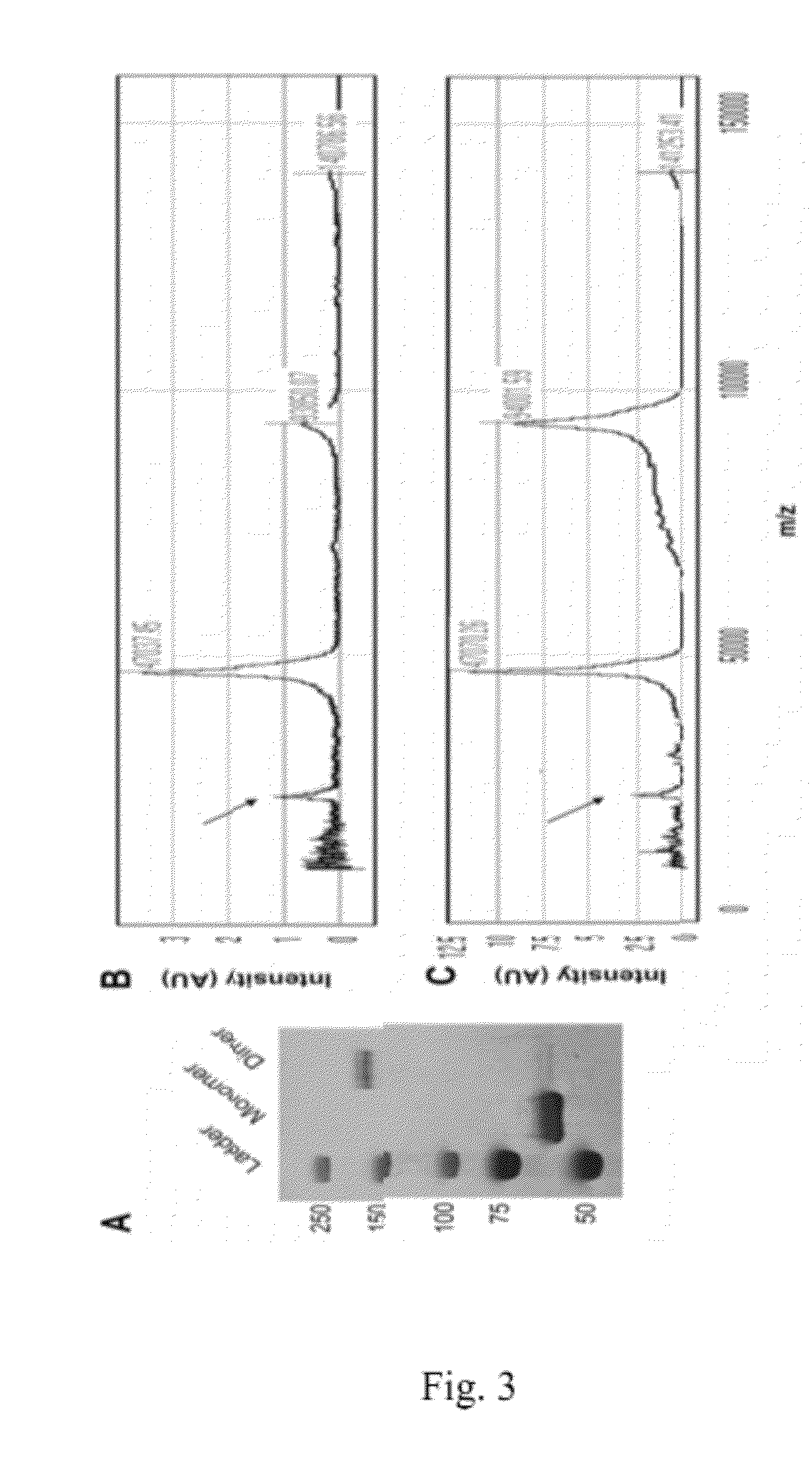Antibodies selective for pathological tau dimers and prefibrillar pathological tau oligomers and their uses in treatment, diagnosis and monitoring of tauopathies
a technology of pathological tau dimers and antibodies selective for pathological tau oligomers, which is applied in the field of antibodies selective for pathological tau dimers and prefibrillar pathological tau oligomers and their use in treatment, diagnosis and monitoring of tauopathies, to achieve the effects of promoting clearance of pathological tau, reducing or delaying tau pathology, and improving cognitive function
- Summary
- Abstract
- Description
- Claims
- Application Information
AI Technical Summary
Benefits of technology
Problems solved by technology
Method used
Image
Examples
example 1
[0322]Tau proteins are numbered according to the largest isoform found in the central nervous system (hTau40), which consists of 441 amino acids and contains both alternatively spliced N-terminal exons and four microtubule biding repeats (“MTBRs”). HTau40 was used for all experiments except where otherwise indicated.
Recombinant Tau Protein Expression and Purification
[0323]The Tau MTBR construct consisting of residues 244-372 was generated by creating a linear PCR product of this region. An EcoRI restriction site and methionine residue were added N-terminal to residue 244 as well as a poly-His tag and NotI restriction site C-terminal to residue 372. The linear PCR product was inserted into the pET-17b vector (Novagen) via EcoRI / NotI digestion followed by T4 ligation. All other Tau constructs were cloned into vector pT7c as described elsewhere (34-37, 86). Tau constructs were expressed in Escherichia coli and purified using TALON metal affinity resin (Clontech) followed by size exclus...
example 2
TOC1 Deletion Maping
[0364]Two overlapping tau deletion constructs (Δ209-228 and Δ221-238) were aggregated and incubated with the TOC1 antibody or with the Tau7 antibody. Both were positive for Tau7 which recognizes the last 11 amino acids of tau, but negative for TOC1. This result indicates that the shared deletion region 221-228 forms an essential part of the TOC1 epitope.
example 3
[0365]Immunogold labeling and Dot Blots of TOC1 were conducted using the following Immunogold Protocol Dot Blots:
Immunogold Protocol
[0366]Sample—2 mins
dH20—5×1 min
Block—30 mins (0.2% Gelatin, 5% Goat Serum in 1×TBS)
Primary—TOC1 1:2500 (0.4 μg / ml) in Block—45 mins
1×TBS-4×2 min
[0367]Secondary—6 nm colloidal gold Anti-Mouse IgM n-chain 1:50 in Block—45 mins
10×TBS—5 mins
dH20—4×2 min
2% Uranyl Acetate in dH20
Dot Blots:
[0368]50 ng of each sucrose fraction was used for dot blots. Tau7 was used 1:2, 200,000 and TOC1 was used 1:10,000 (0.1 μmg / ml) in 5% non-fat dry milk in 0.05% Triton / 1×TBS.
[0369]The results of the labeling are depicted in FIGS. 14A-14L. Figures shows electron microscopy from the resulting fractions after 1 ml of 4 μm aggregated tau was loaded on top of a 4 ml 20%-50% sucrose gradient and spun for 2 hours at 50K rpm. Immunogold labeling with the TOC1 antibody shows TOC1 preference for Fraction 3, which corresponds to the oligomer fraction also observed in human AD brains (Ma...
PUM
| Property | Measurement | Unit |
|---|---|---|
| Selectivity | aaaaa | aaaaa |
| Conformation | aaaaa | aaaaa |
Abstract
Description
Claims
Application Information
 Login to View More
Login to View More - R&D
- Intellectual Property
- Life Sciences
- Materials
- Tech Scout
- Unparalleled Data Quality
- Higher Quality Content
- 60% Fewer Hallucinations
Browse by: Latest US Patents, China's latest patents, Technical Efficacy Thesaurus, Application Domain, Technology Topic, Popular Technical Reports.
© 2025 PatSnap. All rights reserved.Legal|Privacy policy|Modern Slavery Act Transparency Statement|Sitemap|About US| Contact US: help@patsnap.com



